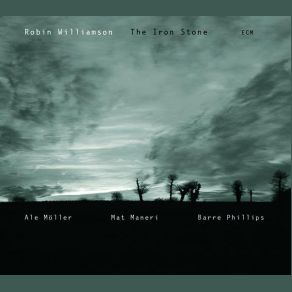The Iron Stone
Download links and information about The Iron Stone by Robin Williamson. This album was released in 2006 and it belongs to Avant Garde Jazz, Avant Garde Metal, World Music, Songwriter/Lyricist, Celtic genres. It contains 15 tracks with total duration of 01:03:37 minutes.

|
|
|---|---|
| Artist: | Robin Williamson |
| Release date: | 2006 |
| Genre: | Avant Garde Jazz, Avant Garde Metal, World Music, Songwriter/Lyricist, Celtic |
| Tracks: | 15 |
| Duration: | 01:03:37 |
| Buy it NOW at: | |
| Buy on iTunes $11.99 | |
| Buy on Amazon $11.49 | |
Tracks
[Edit]| No. | Title | Length |
|---|---|---|
| 1. | The Climber | 3:35 |
| 2. | Sir Patrick Spens | 7:25 |
| 3. | Wyatt's Song of Reproach | 3:21 |
| 4. | There Is a Music | 3:40 |
| 5. | Even Such Is Time | 2:18 |
| 6. | The Iron Stone | 5:56 |
| 7. | The Badger | 4:37 |
| 8. | Political Lies | 4:16 |
| 9. | The Yellow Snake | 3:07 |
| 10. | Loftus Jones | 4:16 |
| 11. | Bacchus | 4:22 |
| 12. | The Praises of the Mountain Hare | 3:00 |
| 13. | To God In God's Absence | 5:42 |
| 14. | Verses At Ellesmere | 4:26 |
| 15. | Henceforth | 3:36 |
Details
[Edit]At the age of 63, poet, songwriter, composer and visionary Robin Williamson shows no signs of slowing down on The Iron Stone, his third set of recordings for ECM. The title, of course, comes from the song of the same name that Williamson and the Incredible String Band first recorded on the Big Huge album in 1969. "The Iron Stone" appears here with another of the ISB's classic tracks, "The Yellow Snake" from Big Huge's 1968 predecessor, Wee Tam. But this is no reinterpretation of ISB tunes, nor is it a summation of Williamson's career. If anything, The Iron Stone is a logical next step in the direction he has relentlessly pursued with ECM. Whereas his first disc for the label, 2001's The Seed-At-Zero, explored the work of Dylan Thomas and other Welsh writers in songs and improvisational poem songs that he performed solo, the second set, 2002's Skirting the River Road used William Blake and Walt Whitman as its muses, and employed the talents of Ale Möller, Mat Maneri, and Barre Phillips, as well as Paul Dunmall. Möller, Maneri and Phillips return here; and Williamson and Möller play all manner of flutes, concertinas, Mohan Vina, harps, whistles, jaw harps, and drums between them. The feeling of continuity remains as Williamson and his musical collaborators set the works of Sir Walter Raleigh, Ralph Waldo Emerson, Thomas, Wyatt and John Clare to music that is equally composed and improvisational. In addition, there are originals. Is this folk music? Yes and no. It is organic music, played upon folk instruments, and much of the source material comes from the lineage British Isles tradition.
The spirit of adventure is more prevalent here than it was on the two previous outings. Williamson has grown increasingly comfortable with t something approaching the free jazz idiom and its reliance on close listening, dynamic, and the uses of space and texture — which, in its way, derives from poetry itself. The tenderness and gentleness of the songwriter's heart are ever present, as is his wondrous sense of humor, that comes as much from sound itself as it does centuries-old linguistic study. Whether it be in traditional songs such as "Sir Patrick's Spens," Turlough O'Carolan's "Loftus Jones," or the pastoral, wicked humor of "Political Lies" by the songwriter, the sense of centering around the music's thematic idea is paramount. Adventure is nigh on "Emerson's Baccus," with its Eastern motif and striated vocals, and"There Is a Music," with its dissonance. The two ISB tunes are done here very differently, yet contain their original strangeness and charm. The Iron Stone is the farthest afield of the artist's ECM records, but also the most focused and collaborative. Phillips and Maneri, who are improvisers by trade, and Möller, who began as a "folk" musician, have all been stretched by their experience with Williamson. In turn he has added depth and dimension to his already staggering musical background. Together they have extended the languages of folk and improvisational musics. In doing so they have created a work at once immediate and timeless, full of warmth, wonder and vision. It's hard to imagine any but the most cynical of listeners not being delighted by the wide array of colors, tones and textures on offer here. The Iron Stone is folk brought back to the hearthstone (perhaps it feels this way in part because it was recorded in an 18th century mill house) in order to embrace the future.